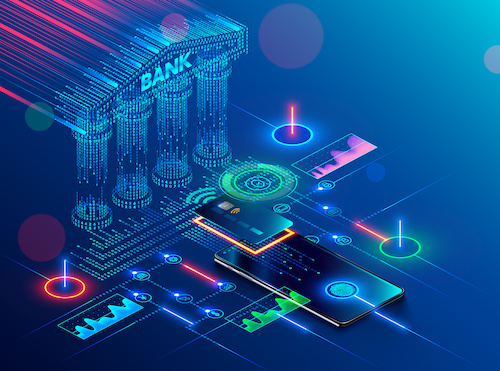Returning to the fundamentals: BaaS as mission-critical financial infrastructure
As the technology and financial services industries continue to collaborate in new ways, the fintech landscape and its intricacies are only becoming more sophisticated.

BaaS has become a critical element in the digital transformation of global financial services
There has been, however, a concerning pattern of jargon terminology being used to describe specific, separate offerings: Software-as-a-Service (SaaS), Banking-as-a-Service (BaaS), Infrastructure-as-a-Service (IaaS), Platform-as-a-Service (PaaS), Banking-as-a-Platform (BaaP), and so on. These terms and the models they represent have distinct meanings and impacts, yet they are being increasingly misused, and this has even been reflected in industry news in recent months.
This has resulted in a misconception of BaaS, the notable integration model for banking services which has been the subject of many recent headlines. To restore understanding in 2024 and beyond, BaaS providers need to get back to basics and convey the core value of BaaS.
Breaking down BaaS
BaaS is typically defined as banks embedding their own products and services in third-party platforms (TPP) and ecosystems via APIs. This model allows banks to extend their channels via TPPs – whether they’re a fintech, neobank, or non-financial platform – to offer banking services to their customers without the need for their own banking licence. Banks, however, are increasingly benefiting from consuming the same modular capabilities from the BaaS model.
This second approach allows financial institutions, from large incumbents to smaller banks and credit unions, to offer products and services (which are enabled by a BaaS provider via APIs) with more speed, scalability and dynamism. By quickly launching new, intuitive financial products that customers want, banks can fill gaps that might exist in their digital capabilities and become better positioned to attract new customers – especially when competitors are lagging in their respective digitalisation – and retain their existing customer base amid stark competition.
Providing clarity and connectivity – not clutter
Fintech was a relatively new concept in the early 2000s. The term itself had yet to take off. However, many in the financial, payments and technology industries recognised that collaboration could fill some of the clear gaps in the financial services market without overlapping roles. People saw that financial institutions didn’t have the technological pathways to offer their customers future-forward digital products.
Thus, this version of BaaS was born, and its core purpose has always been to provide modular, end-to-end, API-based middleware solutions that enable interoperability, flexibility and collaboration within different banking and payment ecosystems – all while ensuring the highest level of compliance.
The primary focus of virtually any provider of mission-critical financial infrastructure has always been to enable financial institutions to expand or replace their core systems and push into the new digital paradigm to offer their customers the easy-to-use, secure digital services they would inevitably demand.
And tech providers are a crucial participant in this undertaking, with the aim to provide clarity, convenience, technical/financial expertise and seamless connectivity to and from financial service providers – not add to the clutter.
As the industry has grown, evolved and even mutated over the past few years, it seems that many have lost sight of the specific value each player in this ecosystem offers to the financial institutions we partner with, leading to confusion which can put at risk the opportunities to build new value over pre-existing assets and to transform the industry.
BaaS as the connective tissue of the financial services industry
BaaS providers are at the centre of the crucial chain of connectivity that enables financial institutions and other entities to offer innovative banking and payments solutions to their customers and partners. This is a particularly vital service to the many financial institutions that do not have the technical expertise or capacity to develop the building blocks necessary for innovation and growth in the digital-first world.
BaaS has become a critical element in the digital transformation of global financial services, enabling seamless payments, powering the connection of people and businesses and vitalising local, national and global economies.
With understanding at a low point, it’s up to those within the BaaS sector to provide clarity. For the sector to thrive in 2024 and beyond, it’s crucial to return to its core mission and to continue to invest in and adopt the emerging technologies that the industry is reliant on, such as GenAI and cloud, among others.
The VC funding winter won’t last forever – even now there are small but promising signs of a thaw. BaaS providers need to accurately define and focus their offerings, ensure internal and external stakeholders are informed about what BaaS is (and isn’t) and ensure their work aligns with the fundamental principles of those we serve.
As the crafters and connectors of the next generation of financial infrastructure, the BaaS sector must continue to reveal the value of its work through the results and impact being delivered to banks, FIs, digital merchants and networks – while ensuring that we’re at the forefront of best practices, staying true to the fundamentals and avoiding shortcuts for success.
There’s never been a better time to embrace BaaS collaboration to lead the way in successfully serving and connecting industries, markets, communities, businesses and people.










































